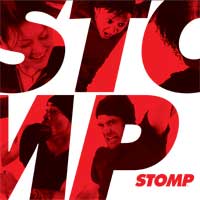
 Highly Recommended **** Broadway in Chicago has had a great season, and it’s not over yet. Ringing in the new year at the Broadway Playhouse is Stomp, the British early 90’s dance and percussion creation of Luke Cresswell and Steve McNicholas. There have been multiple tours and sit-downs ongoing throughout my life, and several attempts to video record it (often as a tool for inspiring young people to participate in the performing arts), but really, the energy and humor is interactive and has to be seen in person to be fully appreciated.
Highly Recommended **** Broadway in Chicago has had a great season, and it’s not over yet. Ringing in the new year at the Broadway Playhouse is Stomp, the British early 90’s dance and percussion creation of Luke Cresswell and Steve McNicholas. There have been multiple tours and sit-downs ongoing throughout my life, and several attempts to video record it (often as a tool for inspiring young people to participate in the performing arts), but really, the energy and humor is interactive and has to be seen in person to be fully appreciated.
“More proletarian” is how I described the show to some friends who asked if Stomp is like tap-dance. The set’s back wall is comprised of corrugated rust, decked out in pots and pans, trashcan lids, and other metal ware which will be used as improvised percussion instruments during one of the show’s most visually dazzling scenes. Performer John Angeles enters pushing a broom, clothed in paint-splattered work clothes, and seemingly out of boredom, begins tapping out a beat. He is soon joined by seven other sweeps in the show’s first big number, in which the choreography and compositions are more synchronized than is typical of sequences later in the evening. The downside of improvised instruments is that they’re not meant to withstand the beating the cast gives them, but the skill with which they replace broken brooms and other props is as impressive as the choreography when everything goes right.
As if to drive home the point that percussion is skilled work, Angeles invites the audience to engage him in call-and-response clapping. He pouts disdainfully at the slow and hesitant response, and then displays his enviable and vastly superior physicality in a solo tap-inspired-dance in work boots. The characters’ contrary impulses between playfulness and posturing form the closest things there are to stories for the pieces. At one time, while three of them are performing with matchboxes, they each, in turn, snarl at whomever dares to display any individuality or have too much fun. Another of the featured performers, Reggie Talley, freezes in existential terror when he is spitefully denied a tool he needs for his work/play. He and Angles later get into several suggestive rivalries involving surprisingly melodic rubber hoses and sinks.
More fun instruments are added with each dance number, culminating in Stomp’s now-iconic trashcan banging. The press materials say that some of the material is new, but having not seen it before, I don’t know which is which. The whole show is accompanied by the evocative lighting Steve McNicholas designed with Neil Tiplady, which moves as quickly as the performers. The only thing I missed in the later scenes were the characterizations which had driven the earlier ones—things seemed to be happening just for their own sake. However, the audience got much better at participating, and Talley in particular proved himself a charmer at opening. Stomp isn’t just a surge of energy at a time of day when most people will be feeling sluggish, it also facilitates a temporary communal bonding between everyone in the theatre as we each become just a little more attuned to our bodies.
Stomp will continue at The Broadway Playhouse at Water Tower Place, 175 E Chestnut, thru January 1st, with performances as follows:
Wednesdays: 2:00 pm and 7:30 pm
Thursdays: 7:30 pm
Fridays: 7:30 pm (and 2:00 pm on December 30th)
Saturdays: 2:00 pm and 8:00 pm (except December 24th)
Sundays: 2:00 pm (and 6:00 pm on November 27th)
Tickets range from $39-84 and are available at any Broadway in Chicago theatre box office and by calling 800-775-2000 or visiting BroadwayInChicago.com. For group tickets of 10 or more, call 312-977-1710.
Parking may be purchased in the garage at 163 E Chestnut St. (Call 312-440-3166)
To see what others are saying, go to TheatreInChicago.com, go to Review Round-Up, and click “Stomp.”







More Stories
“Survivors” reviewed by Julia W. Rath
“Prayer for the French Republic” reviewed by Julia W. Rath ( and another by Paul Lisnek)
“Obliteration” reviewed by Mark Reinecke